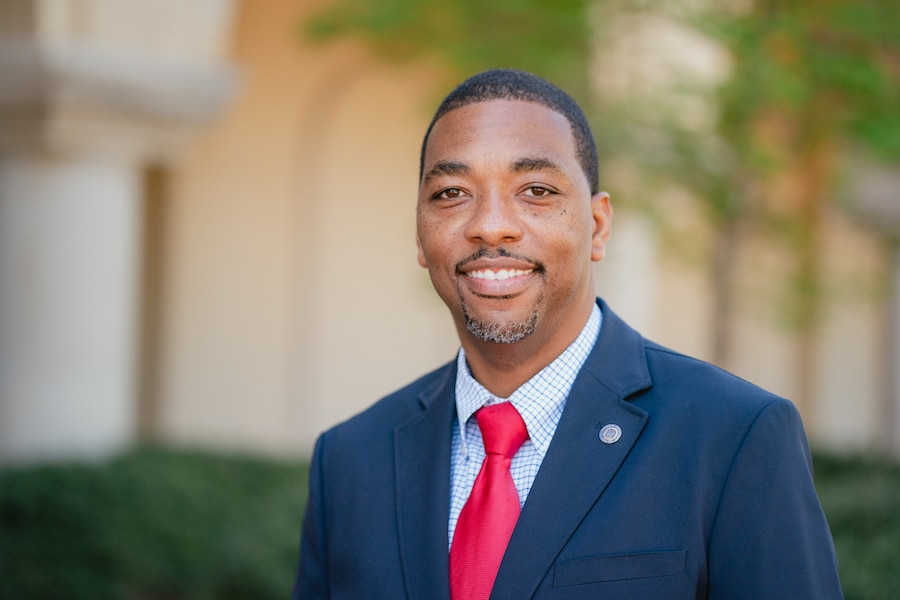NASHVILLE–The proposal of the Great Commission Resurgence Task Force to remove geographical barriers preventing the International Mission Board from working with unreached people groups on American soil will not likely result in missionaries being assigned stateside, nor will it result in churches planted by IMB personnel, outgoing IMB President Jerry Rankin contends.
For the Southern Baptists of Texas Convention, the task of engaging unreached people groups (UPGs) with missionaries who work in an international culture on domestic soil is already afoot. The Texas Missions Initiative (TxMI) launched by the SBTC last year includes the priority of reaching the rising number of UPGs and immigrant groups to the state by assigning people group missionaries to work with specific ethno-linguistic people groups.
In an interview with the Florida Baptist Witness, Rankin said he supports Component 3 of the GCRTF progress report, made to the Southern Baptist Convention’s Executive Committee on Feb. 22, which asks “Southern Baptists to entrust to the International Mission Board the ministry to reach the unreached and under-served people groups without regard to any geographic limitations.”
Rankin said, however, there should not be an expectation that the IMB will place missionaries throughout the United States because “it’s a matter of proportion” and indigenous strategies. Instead, Rankin, who plans to retire July 31, said he envisions the IMB’s primary role will be to mobilize, train, equip and mentor local churches, associations, state conventions and the North American Mission Board.
“It will be a partnership,” Rankin said. “It’s not an exclusive role that the IMB is going to do for Southern Baptists in this assignment. Our role is to facilitate, enable all Southern Baptists to fulfill the Great Commission, and so that’s how I would anticipate our approaching this aspect of the Great Commission task in America.”
Although the progress report indicates the GCRTF is “unleashing the International Mission Board upon American soil,” Rankin said NAMB and others have already encouraged IMB to help them reach ethnic and other peoples in the states.
“I don’t see this really as very radical. I don’t see it as conflicting and overlapping of turf with North American Mission Board, a potential conflict as some had conjectured,” Rankin said. He noted IMB and NAMB administrators and boards already meet twice a year to collaborate on some efforts.
UNENGAGED AND UNREACHED PEOPLE GROUPS
Rankin said the top priority for the IMB is the Unengaged Unreached People Groups (UUPG), of which there are 41 with a population of more than a million and 469 with a population of more than 100,000. These groups have no access to churches, other Christians, Scripture or Christian resources in their heart language –and no mission agency.
The GCRTF believes a new synergy can be created in international missions as the SBC makes use of IMB expertise. “Most of the 586 people groups that do not speak English in the United States have strategy coordinators working overseas with the same groups,” stated GCRTF chairman Ronnie Floyd in making his report.
Among UPGs, Rankin said, less than 2 percent of the population is born again, and there is no active church planting movement or gospel witness for the remaining 98 percent. Of 11,000 people groups throughout the world, over 4,000 are considered unreached.
Considering the hundreds of UUPGs around the world who have no access to the gospel, and over 4,000 UPGs who have limited exposure to the gospel, Rankin said he is positive about the proposed new strategy.
Citing prolific work among immigrant groups in the U.S., such as Vietnamese, Hispanics, Slavs and Haitians, Rankin said the state conventions “don’t have the capacity, the focus” to reach other people groups that are less populous. “They really don’t have the training or the expertise in those cultural worldviews that we would have,” he said.
As an example of the type of training the IMB could provide for North American missions, Rankin noted the “Great Commission Initiative,” which grew out of a group of urban Baptist directors of missions, including some from Texas. The GCI website says the training is possible because of CP and “Associational Missions Gifts” and lists the IMB as one provider of “intensive training and networking opportunities designed to equip highly motivated Christians to identify, engage, evangelize and disciple unreached people groups.”
Terry Coy, missions director for the SBTC, said the SBTC’s people group strategy grew out of GCI training. The TxMI strategy is focused on training and mobilizing churches to reach the lost in Texas in creative ways. Striving to reach ethno-linguistic people groups and immigrants to the state, the SBTC partners with people group missionaries to specific ethno-linguistic people groups to do evangelism, discipleship and church planting.
“For the last five to seven years, the urban associations in Texas have emphasized the needs for an ethno-linguistic people group (EPGs) approach to missions,” Coy said in an interview with the TEXAN, adding that these associations are already receiving IMB-based training. “But yes, we are glad to see this emphasis. Certain personnel at NAMB have been pushing for it for the last several years.”
Currently, there are four people group missionary couples supported by the SBTC: two in Houston; one in Dallas and one in Port Arthur. There are plans to add an additional missionary to focus on a people group of Eastern origin. The SBTC is also awaiting executive board action on adding a full-time mission strategies associate in May who will spend about half his time on EPG strategies.
Despite appreciation for EPG-oriented mission strategies, Coy said the SBTC missions staff has wondered exactly how well the IMB-based EPG approach will be fleshed out in Texas.
“An IMB EPG approach can be used in principle in the U.S., but perhaps not in totality,” Coy said. “For example, once the Dinka people group of the Sudan land as immigrants in the United States, then they are no longer the Dinka people group of Sudan They are the Dinka people group in the United States. Therefore, the missiological principle of engaging them as a people group stands, but their Dinka culture is no longer ‘pure,’ so to speak, but is in the process of becoming Americanized. The question becomes, therefore, what adjustments need to be made to an ethnolinguistic people group strategy in the North American context?”
“We have already found that the tribal, ethnic and language barriers in India, for example, are not as deep once they arrive in the U.S.,” Coy explained.
CP INCREASE PROPOSED
Speaking to Component 6 of the GCRTF report, which calls for increasing the IMB portion of Cooperative Program funds from 50 to 51 percent, Rankin said he is appreciative of the increase, described by the GCRTF as “symbolic and substantial.”
However, the additional 1 percent of what he labeled “diminishing” CP receipts–about $2 million–is not going to make a lot of difference to a $283 million budget or “open up a flow of missionaries to the field,” Rankin said.
Less than half of the IMB’s funding comes from CP. The remaining budget comes from the Lottie Moon Christmas Offering and other sources. The task force’s final component suggests facilitating the increase by reducing 1 percent in funding for the Facilitating Ministries of the SBC within the Executive Committee budget.
Tangibly, the increase in resources could mean 20 more couples on the field, Rankin said. Still, he said, it’s not enough.
“Is it enough for what? Enough for reaching a lost world? Not hardly. That’s how we gauge everything. The remaining lostness, what does it take?” Rankin asked “So, no, 1 percent is not enough.”
Rankin said the way CP funds are divided “will never work” and will always be a “win-lose.”
“I think it can be a win-win,” he said.
In addition to providing “adequate” funding for each entity, determining just how much each ministry needs to carry out its ministry assignment could be part of thinking creatively and differently in order to adapt to new paradigms of doing missions, Rankin said.
“One thing is you’ve got to give the churches flexibility,” Rankin said.
Another way to adjust would be the GCRTF’s proposal related to the category of Great Commission Giving, Rankin said, suggesting a seemingly different giving definition that the one proposed in the progress report, a subject addressed in the April 19 issue of the TEXAN.
“The whole idea of Great Commission Giving is that anything a church designates to a recipient of CP funds should count as CP funding, not as a separate category,” Rankin said. In clarifying his comments to the Witness, Rankin added, “As long as churches feel led to designate additional funds to any entity that is a recipient of CP, state or national, it should be credited to CP.
He pressed the point further in a recent post at rankinconnecting.com, calling for a new paradigm, “something no one seems willing to talk about.”
“We have tried to convince churches that they get to cooperate in all the work of the state convention, Baptist colleges, SBC seminaries, missionary work and a host of other ministries by just making a regular financial contribution. They don’t have to do anything. But is simply giving truly cooperation without involvement and ownership in the decision of what one gives to?”
Ultimately, Rankin said both of the components are positive, removing geographic restrictions to allow IMB to assist with stateside UPGs and the boost in CP funding—even 1 percent. “I think this is significant that once that 50 percent barrier is broken, it does create that flexibility to make adjustments in what our allocations are,” he said.
That’s more along the lines of what GCRTF member David Dockery, president of Union University in Jackson, Tenn., had in mind when he updated a local forum on the percentage increase. “We want to begin to develop a trajectory, just a start, but something that we hope can move forward.”
Dockery recognized the difficulty of budget planning, statin, “Changing something by 1 percent is very hard. You often have to chip away at something over here to add something over there.”
Also concerned by the number of mission volunteers delayed by a lack of sufficient funds, Dockery added, “The first step is to ask the convention to rearrange its budgeting priorities, voe the 50 percent that goes to international missions and make that 51 percent, and find ways to grow that each year.”
–Primary reporting by Joni B. Hannigan of the Florida Baptist Witness with additional reporting by Southern Baptist TEXAN correspondent Melissa Deming.














